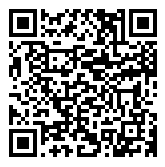What is an ultrasonic transducer
Release time:
Aug 26,2024
An ultrasonic transducer is a device that converts electrical energy into ultrasound waves and vice versa. This technology has a wide range of applications in various fields, including medical imaging
What is an ultrasonic transducer
An ultrasonic transducer is a device that converts electrical energy into ultrasound waves and vice versa. This technology has a wide range of applications in various fields, including medical imaging, industrial testing, and distance measurement. In this article, we will explore the principles of ultrasonic transducers, their types, and applications.
Principles of Ultrasonic Transducers
Ultrasonic transducers work on the principle of piezoelectricity, which is the ability of certain materials to generate an electric charge in response to mechanical stress. In an ultrasonic transducer, a piezoelectric crystal is used to convert electrical energy into mechanical vibrations. When an alternating electrical signal is applied to the crystal, it vibrates at a specific frequency, generating ultrasonic waves.
Types of Ultrasonic Transducers
There are two main types of ultrasonic transducers: transmitters and receivers. Transmitters generate ultrasonic waves by converting electrical energy into mechanical vibrations, while receivers convert incoming ultrasonic waves into electrical signals. Transducers can also be classified based on their operating frequency, power output, and size.
Applications of Ultrasonic Transducers
Ultrasonic transducers have a wide range of applications in various fields. In medical imaging, ultrasonic transducers are used in devices such as ultrasound machines to create detailed images of internal organs. In industrial testing, ultrasonic transducers are used to detect flaws in materials and measure thickness. In distance measurement, ultrasonic transducers are used in sensors to calculate the distance between objects.
Advantages of Ultrasonic Transducers
Ultrasonic transducers offer several advantages over other types of sensors. They are non-invasive, meaning they do not require physical contact with the object being measured. They are also highly accurate and provide precise measurements in various conditions. Additionally, ultrasonic transducers are reliable and have a long lifespan, making them ideal for use in critical applications.
Challenges of Ultrasonic Transducers
Despite their many advantages, ultrasonic transducers also face some challenges. One common issue is interference from environmental factors such as temperature, humidity, and air pressure, which can affect the accuracy of measurements. Additionally, ultrasonic waves can be absorbed or reflected by certain materials, leading to errors in readings. To overcome these challenges, engineers must carefully design and calibrate ultrasonic transducers for specific applications.
Future Developments in Ultrasonic Transducers
Researchers are constantly working on developing new technologies to improve the performance of ultrasonic transducers. One area of focus is the miniaturization of transducers, allowing for smaller and more portable devices. Another area of research is the integration of advanced signal processing algorithms to enhance the accuracy and reliability of measurements. With continued advancements in technology, ultrasonic transducers are expected to play an even greater role in various industries in the future.
Conclusion
In conclusion, an ultrasonic transducer is a versatile device that converts electrical energy into ultrasound waves and vice versa. With applications in medical imaging, industrial testing, and distance measurement, ultrasonic transducers play a crucial role in various fields. While they offer many advantages, such as non-invasiveness and high accuracy, they also face challenges such as environmental interference. As researchers continue to innovate and improve this technology, ultrasonic transducers are expected to become even more advanced and widespread in the future.
Related News
Aug 26,2024
Aug 26,2024
What are the characteristics of flow sensors
Aug 26,2024
What are the characteristics of sound sensors
Aug 26,2024


